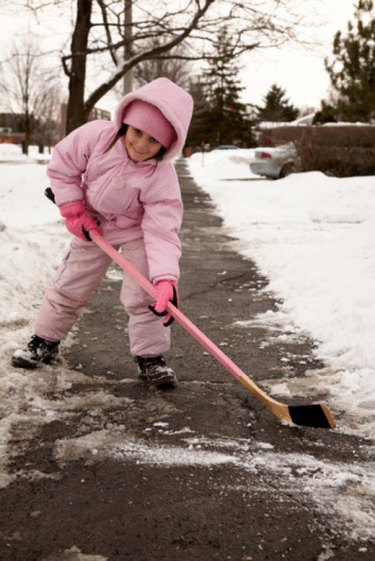Things You'll Need
Shovel
De-icer
Water
Bleach
Stiff brush

Slippery walkways can cause serious injuries to individuals walking on them. They pose a significant risk to the elderly and injured. Slippery walkways occur when snow or ice freezes on a walkway, or algae begins to grow there. You must give attention to your walkways immediately when you notice that they pose a risk. Armed with knowledge on how to prevent your walkways from becoming slippery, you can immediately lower the risk of injury to yourself and others.
Eliminating Snow and Ice
Step 1
Pay attention to weather predictions in your area. This will allow you to buy shovels or de-icers if you do not already have them. It will also help you predict whether you will be dealing with freezing rain or light, fluffy snow which require different techniques.
Video of the Day
Step 2
Apply a de-icer early in an ice storm, or a storm with heavy wet snow. You can choose between sand, rock salt, potassium chloride and other products.
Step 3
Keep up with shoveling once the snow starts if possible. If it is only a powdery snow, you can just brush it away with a broom. If you cannot keep up with it, just shovel it all away at the end of the storm.
Step 4
Apply de-icer again if there is any residual snow or ice on the walkway. Clearing the walkway from snow and ice completely will eliminate any slippery spots.
Eliminating Algae
Step 1
Eliminate any shade if possible. The wet, shady areas are most prone to algae growth.
Step 2
Mix together a solution of bleach and water. The solution should be about 10 percent bleach and 90 percent water.
Step 3
Apply the solution to the walkway, scrubbing with a stiff brush. Apply each time algae begins to grow to prevent a slippery walkway.
Video of the Day